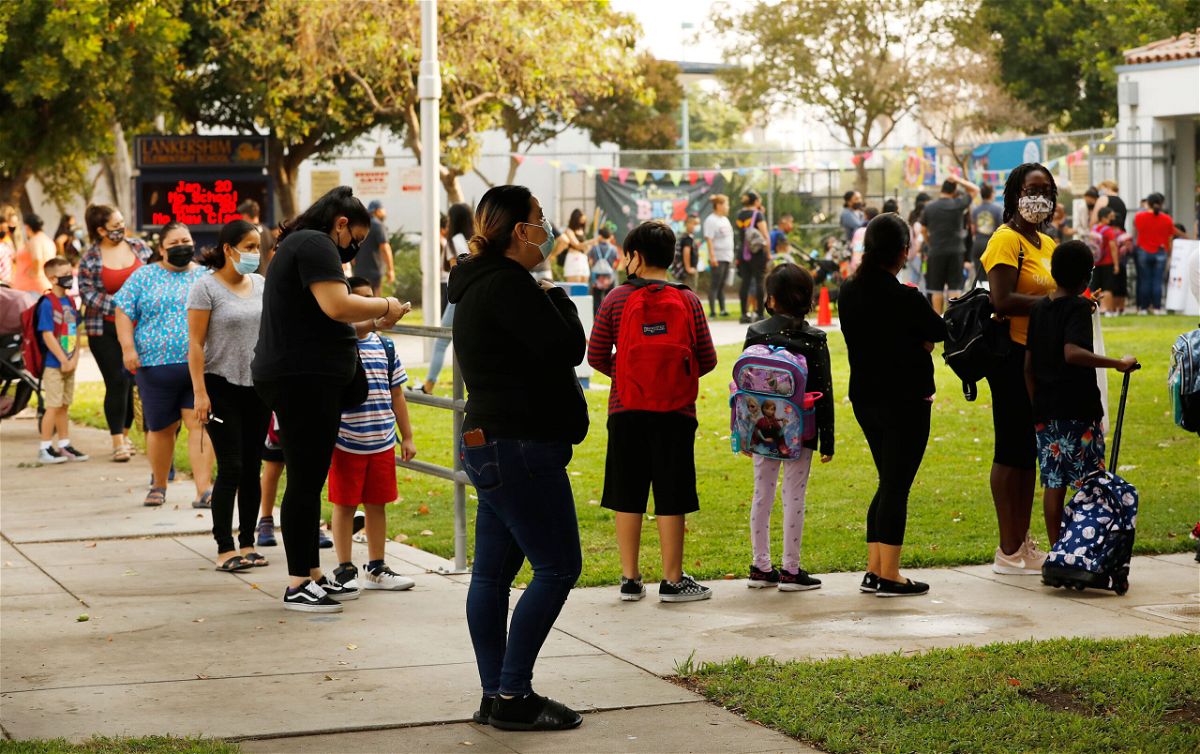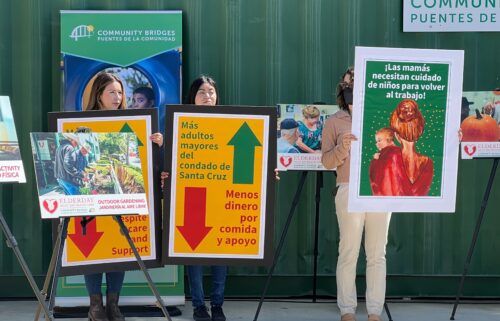Parents worried about Covid in schools have an easy weapon at hand, experts say — fresh air

By Maggie Fox, CNN
Jennifer Nuzzo is both a mom and a health expert. Worried about sending her young son to in-person school last year, she settled on one of the few things she could control.
She bought a portable air cleaner for her son’s classroom.
She’s joining air quality experts who are urging schools to do more this fall to make sure kids — as well as teachers and staff — are breathing air as free as possible from coronavirus particles.
“Parents are feeling like they are not in control of the situation, and this is something they potentially could do to add peace of mind,” Nuzzo, an associate professor at the Johns Hopkins Bloomberg School of Public Health and a senior scholar at the Johns Hopkins Center for Health Security, told CNN.
“They are not cheap, but they are not as expensive as some of the alternatives, such as private schools or hiring nannies,” Nuzzo said.
“In my view it was worthwhile investment,” she added. “It adds a layer of protection, for sure.”
Filtered or fresh air is not a substitute for masks and certainly no substitute for vaccination, but it’s another way to help protect people stuck indoors for hours from breathing in the virus, said Joseph Allen, who directs the Healthy Buildings Program at the Harvard T.H. Chan School of Public Health
“This is easier than people think,” Allen told CNN.
“It is actually quite simple to improve the air quality inside classrooms,” added Allen, who has been advocating for better air ventilation in schools and other buildings as a way to control coronavirus spread since the pandemic started.
“There is still plenty of time. And, quite honestly, if a school system or district hasn’t done this already, that is a signal that you have failed leadership. The strategies to improve air quality in schools have been out there for over a year. The resources are available. There is money available and it is not complicated.” He has an online tool to help calculate what size portable air cleaner to use.
But Claire Barnett, the executive director of the Healthy Schools Network, said the money isn’t clearly available, schools may not understand how to get it, and they may struggle to understand what’s worth doing and what’s not.
“It’s complicated. First of all, it’s not easy to fix ventilation systems,” Barnett told CNN.
“If you have to do all new installations, it is expensive,” she added.
The $550 billion infrastructure bill provides some money, but none is clearly marked for use to improve indoor air quality, she said — although the Department of Education issued guidance Thursday reminding schools of the funds available.
HVAC systems or air filters must fit the rooms they are used for, providing the correct rate of what’s called air exchange — cleaning or replacing old air with fresh air at a rate fast enough to get rid of any virus people might be breathing out before someone else can breathe it in.
“I think it’s a no-brainer,” she said. “But at least half the schools haven’t done anything.”
Allen agrees that not enough schools have acted.
“Over the past year, I’ve heard every excuse not to act you could imagine. ‘My building’s too old. It’s too expensive. it takes so long. I don’t have windows,'” he said. “And in reality, the strategies we are talking about are not hard. They are not expensive and they can be done quicky.”
Portable air cleaners, or properly filtered HVAC systems, can remove the virus from the air — and other pollutants, as well, Allen said.
“These devices capture particles from the air. They are terrific for wildfire smoke. They’re terrific for general outdoor air pollution,” he added. “These are plug and play.”
There are low-tech options too. “If you do have windows, you can open up the windows, open up the doors, create some cross ventilation. That’s a good strategy.”
Managers of schools and other buildings should have been improving ventilation long ago, Allen said.
“These are things we should have been doing for a long time to protect against other respiratory viruses like influenza,” he said. Studies also show that better air quality improves students’ test performance and cognitive function, he said.
“We have a once-in-a-generation opportunity to correct this. There is the will and there are stimulus dollars,” he said.
“If you do this right, if schools do this right, and follow this simple guidance we’ve been giving it can provide now, they will provide benefits not only during COVID but for years if not decades after this.”
His fear: that school districts will waste the chance.
Nuzzo and Barnett share that fear.
“I know there are a whole bunch of gimmicky things out there,” Nuzzo said.
“We are particularly concerned about foggers and the electrostatic sprayers, spraying disinfectants,” said Barnett.
Cleaning products can end up polluting indoor air, she said. Some air cleaners generate ozone — something that’s dangerous to breathe in. “You don’t want them in schools or any other place,” Barnett said.
The-CNN-Wire
™ & © 2021 Cable News Network, Inc., a WarnerMedia Company. All rights reserved.



